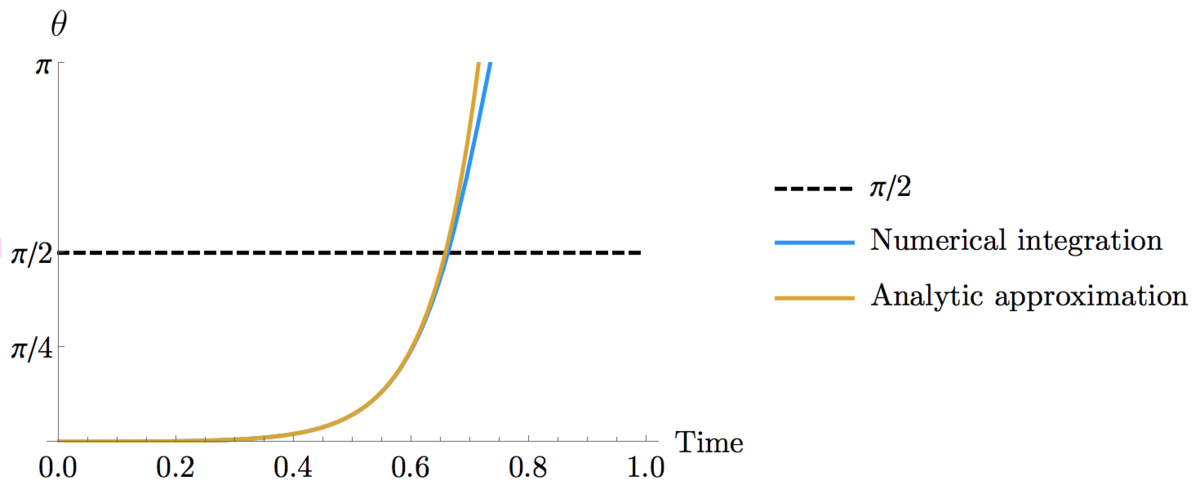Falling Pencil

Estimate the time it takes for a pencil of length l = 1 0 c m to fall if the pencil starts from rest at the angle θ 0 = 0 . 0 0 1 rad with the vertical.
Give your answer to 3 significant digits.
Details and assumptions
- Assume that the pencil is a thin rod with uniform mass distribution along its length.
- Assume the pencil tip does not slip.
- Take the gravitational acceleration to be g = 1 0 m s − 2 .
The answer is 0.6618354118776116.
This section requires Javascript.
You are seeing this because something didn't load right. We suggest you, (a) try
refreshing the page, (b) enabling javascript if it is disabled on your browser and,
finally, (c)
loading the
non-javascript version of this page
. We're sorry about the hassle.
1 solution
Please justify why you are treating omega as if it is constant.
Log in to reply
ω in the solution is not the angular velocity of the pencil. It is the constant defined as m g l / 2 I .
Log in to reply
Just noticed it has the correct units though
Plz tell me how to get exact time .68 sec and how to solve the actual integration without assuming theta small.
Log in to reply
My advice would be to apply conservation of energy to get a relation for d t d θ in terms of θ . If you try to integrate directly, you'll get an elliptic integral. If you want a more practical result, you can expand the expression for d t d θ into a series and integrate term by term.
As no energy is dissipated during the pencil's fall, we can find the equation of motion using the conservation of energy. The total energy is given by E = 2 1 I θ ˙ 2 + 2 1 m g l cos θ Taking the time derivative we have E ˙ = 0 = I θ ˙ θ ¨ − 2 1 m g l sin θ θ ˙ = I θ ¨ − 2 1 m g l sin θ which yields the equation of motion θ ¨ = 2 I m g l sin θ This relation is difficult to solve analytically so we can proceed by evaluating it numerically, or by making an approximation.
The differential relation we have to solve is very similar to the governing equation for the simple harmonic oscillator, where we can approximate sin θ ≈ θ to analyze small oscillations. Here this might appear unwarranted since the pencil falls through the angle ϕ = π / 2 . However, as the pencil falls, it picks up speed, which means that it spends less time at the large angles. It is thus plausible that the time the pencil spends at small angles dominates the total time T .
Let's therefore assume that the replacement sin θ → θ is valid and proceed with caution. In this case we have θ ¨ = 2 I m g l ω 2 θ = ω 2 θ This has the solution θ ( t ) = θ 0 cosh ω t which predicts T = ω 1 cosh − 1 2 θ 0 π or T ≈ 0 . 6 5 7 4 s for our system.
Below we plot the approximate analytic solution alongside the direct numerical integration of the exact differential equation. The numerical result yields T ≈ 0 . 6 6 1 8 s which is less than 1% off.
It would appear our approximation is quite good and that T is dominated by motion through small angles.
Note: I for our pencil is given by 3 1 m l 2 which we can see by summing up r 2 δ m from the pivot to the end of the pencil I = 0 ∫ l r 2 δ m = 0 ∫ l l m r 2 d r = 3 1 m l 2